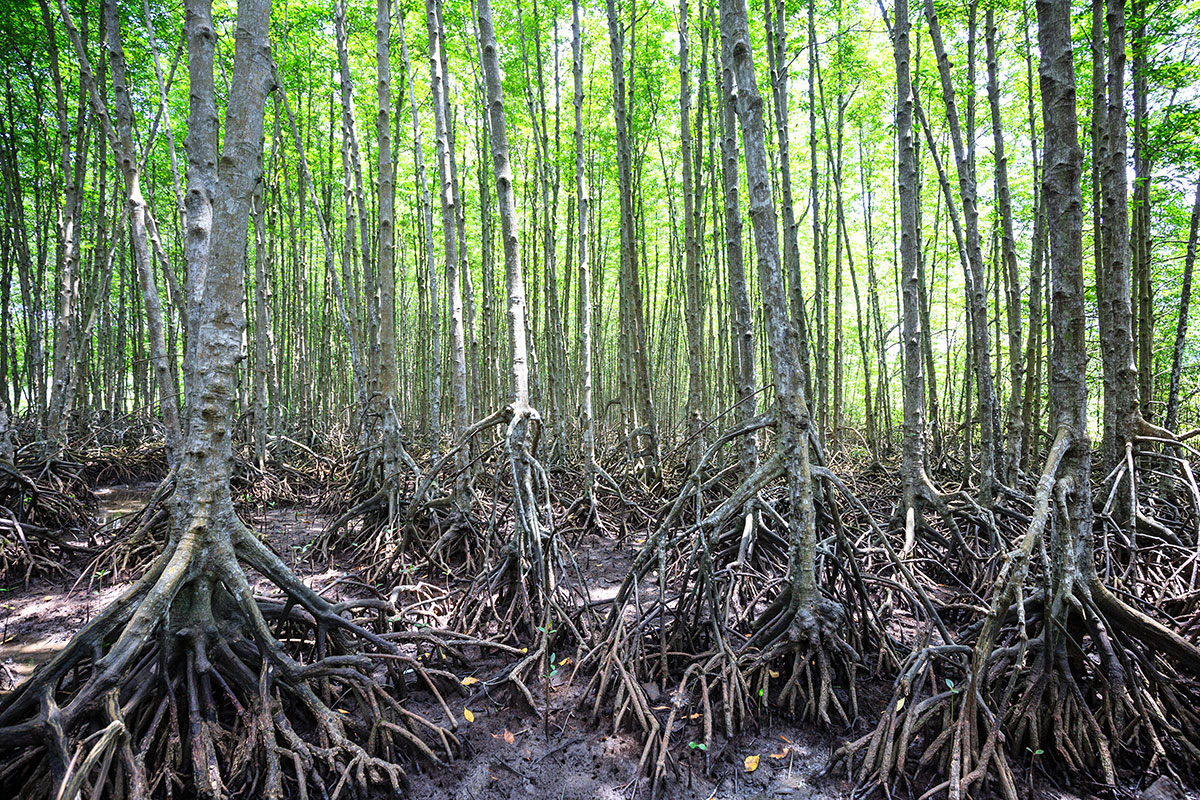Reflections on Vietnam
This morning at 0300 we sailed around Singapore and are now at 2 deg N headed to Yangon (Rangoon), Myanmar/Burma. We will arrive there in 3 days.
While in Vietnam we stayed in and around the estuary that contains Ho Chi Minh City. Estuaries are highly productive due to eons of silt & clay deposition and their associated nutrients, and intense human development follows thanks to the bounty of the sea and the nearby land. Fruit trees grow within arm’s reach no matter where you are, and agriculture of course is based on rice. My biggest impressions from Vietnam were how seductive and mystifying it felt, and how urgent our global plastic problem is.
Vietnam is a beautiful place and I want to go back. The air is slow and heavy, fruit smells a little bit like nausea. Blaring karaoke, traffic, and shouting merchants come at you in a dreamy haze. Small, happy dogs trot around, children are more adorable than anywhere else on the planet, houseboats placidly patrol their riverhoods. Crossing the street is an exercise of faith, where you strike out on a path and “give it up to God” while swarms of motorbikes flow around you like water. Somehow, this works. I want to be in all of it again, and explore it more along with Cambodia and Laos.
Vietnam was the first port on this trip where I felt a sense of emergency about what we’re doing to our home – especially the oceans – with plastic. It is a contagion. Everywhere has plastic litter, corralled only by gravity and water. Beautiful design, such as flower planters on the railing across a bridge, commonly has accumulated plastic just inches away. Gorgeous landscaping with round-the-clock groundskeepers has plastic waste raked into piles as though they’re waiting for someone to come pick it up.

Cần Giờ Mangroves
My global change ecology students had an exceptional opportunity at the Cần Giờ Mangrove Biosphere Reserve, where 200,000 acres of mangrove forests were devastated by Agent Orange, followed by decades of restoration first by local citizens, then the Forestry Department of Ho Chi Minh City, and finally UNESCO. We toured the reserve and planted mangrove seedlings in a restoration area. Cần Giờ is in terrific shape today, with mangrove cover largely restored, a bat protection area, an endangered crocodile breeding program, and macaques, wild boar, and cheetah. And a plastic problem that seems overlooked. A juvenile crocodile chewing on a label. At the restoration site we took the root balls out of their containers, which got tossed on a pile of another couple hundred planting containers. I started to wonder if I was the only one who could see it.
So what of waste management in Vietnam? Japan offers a recent contrast with respect to management as well as public behavior. One similarity between the two countries is that there are very few waste receptacles available. This is where the similarities end. Japanese citizens carry their trash with them until they encounter a container that is partitioned into three categories. Japanese streets are impeccable, flower petals being the only “litter” I saw in Kyoto. Japan’s waste management agencies also incinerate plastic, with predictable effects on air quality. The waste management system in Vietnam is simpler: there is no burning of plastic, no containing nor carrying of any refuse. All waste is discarded in place, whether a sidewalk or a street or a river.
With a public education level of about 20%, local wisdom is that the tides bring what we need and the river carries away what we don’t. Upland litter eventually becomes waterborne, especially with the cleansing monsoons. Rivers – Mekong, Saigon, Red, and hundreds of others – are source and sink of drinking water, bathing, laundry, and sanitation. In the Mekong we saw a dead pig floating downriver, ballooned up and with all four legs straight out like it was an overturned table.
– – – – – – – – – –
Since Vietnam we have been in the golden country of Burma (Myanmar) and now India and you can imagine similar scenarios in these other two nations. In our outreach work we hear time and time again how education is the only way to make a change regardless of the target (e.g., women empowerment, disease control, conservation). Many of you have dedicated your lives to education and sometimes it feels like the improvements are small. Better be a candle than the darkness. More on outreach activities in upcoming posts.
We sail to Port Louis, Mauritius, at 6:00 this evening.
Susan
Further Reading
Meet Water Resources Engineer Kayla BrownNew Mexico Must Become a Catcher of Rain
Ripple Effects
Get to know Water Resources Engineer Jake Radeff
Meet Conservation Biologist Nolan Schillerstrom
More From This Author
Semester at Sea: Incubating an Interest in ConservationSemester at Sea: Reflections on Vietnam (Việt Nam)

